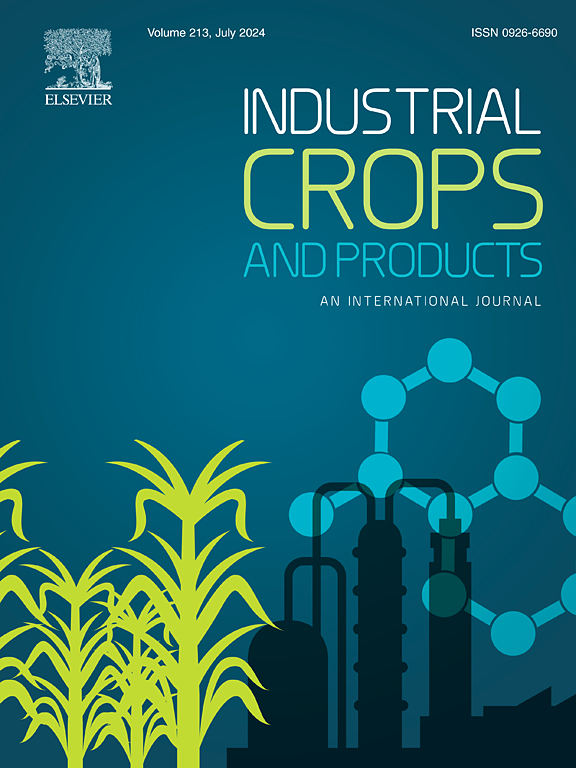Bioactivity screening of selected Moroccan medicinal and aromatic plants, and the chemical basis of the phytotoxicity of caper, Capparis spinosa L.
IF 5.6
1区 农林科学
Q1 AGRICULTURAL ENGINEERING
引用次数: 0
Abstract
Plant natural products are potential sources of biostimulants that can help plants overcome the effects of stress. The adverse effects of soil salinity on wheat growth necessitate the exploration of alternative sustainable solutions, such as biostimulants from medicinal and aromatic plants, to enhance crop resilience and productivity. This study aimed to screen nine Moroccan medicinal and aromatic plant extracts for their effect on wheat growth under saline and non-saline conditions using a seed soaking treatment, in a completely randomised experiment. Except for Marrubium vulgare leaf and Origanum compactum extracts, which averagely improved root length by 25 % and 14 %, respectively, none of the other extracts had significant positive effects on wheat seedling growth. Capparis spinosa (caper) extracts inhibited wheat emergence and growth, with leaf extracts being more phytotoxic than the stem extracts. The leaf extracts of C. spinosa caused an average reduction of the leaf length, root length, shoot dry weight and root dry weight of the wheat seedlings by 31 %, 21 %, 92 % and 94 %, respectively, compared with the control. Further fractionation of the leaf crude extract and follow-up screening revealed that the phytotoxicity likely resulted from a synergy between compounds in different fractions. Chemical analysis of the most active fraction by UHPLC-MS and NMR revealed loliolide as the major compound, alongside oxylipins and indole alkaloid derivatives. Additionally, a previously undescribed compound, 8-(1H-indol-3-yl-methyl)rutin, was also identified. These compounds potentially contribute to the phytotoxicity. The results of this experiment show that although two extracts enhanced root length, overall biostimulant effects were minimal, with C. spinosa extracts being significantly toxic, indicating the need to prevent their application on wheat.

摩洛哥药用和芳香植物的生物活性筛选及刺山柑植物毒性的化学基础。
植物天然产物是生物刺激物的潜在来源,可以帮助植物克服压力的影响。土壤盐碱化对小麦生长的不利影响,需要探索可替代的可持续解决方案,如药用和芳香植物的生物刺激素,以提高作物的抗灾能力和生产力。这项研究的目的是在一个完全随机的实验中筛选9种摩洛哥药用和芳香植物提取物,研究它们在盐水和非盐水条件下使用种子浸泡处理对小麦生长的影响。除凡合花叶和牛耳草提取物对小麦幼苗生长的平均促进作用分别为25%和14%( %)外,其余各提取物对小麦幼苗生长均无显著正向影响。刺山柑提取物对小麦的出苗和生长有抑制作用,且刺山柑叶提取物的植物毒性大于茎提取物。与对照相比,刺麻叶提取物使小麦幼苗叶长、根长、茎干重和根干重平均分别减少31 %、21 %、92 %和94 %。叶粗提物的进一步分离和后续筛选表明,植物毒性可能是由不同组分中化合物之间的协同作用引起的。通过UHPLC-MS和NMR对其活性部位进行化学分析,发现其主要成分为榄油内酯,以及氧脂类和吲哚类生物碱衍生物。此外,还鉴定了一种先前未描述的化合物,8-(1h -吲哚-3-甲基)芦丁。这些化合物可能有助于植物毒性。本试验结果表明,尽管两种提取物均能提高小麦的根长,但总体上的生物刺激素作用很小,刺棘草提取物具有显著的毒性,表明需要防止其在小麦上使用。
本文章由计算机程序翻译,如有差异,请以英文原文为准。
求助全文
约1分钟内获得全文
求助全文
来源期刊

Industrial Crops and Products
农林科学-农业工程
CiteScore
9.50
自引率
8.50%
发文量
1518
审稿时长
43 days
期刊介绍:
Industrial Crops and Products is an International Journal publishing academic and industrial research on industrial (defined as non-food/non-feed) crops and products. Papers concern both crop-oriented and bio-based materials from crops-oriented research, and should be of interest to an international audience, hypothesis driven, and where comparisons are made statistics performed.
 求助内容:
求助内容: 应助结果提醒方式:
应助结果提醒方式:


